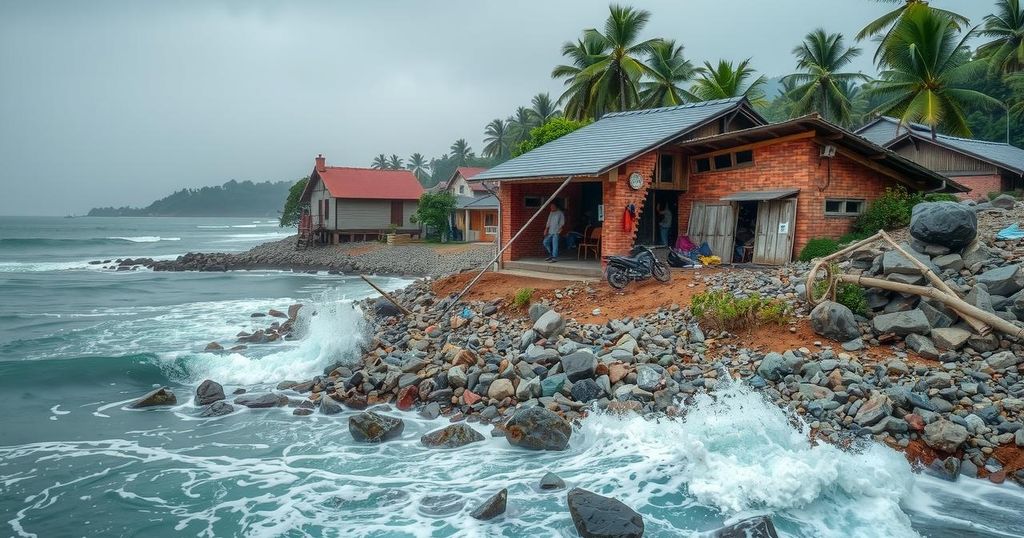Commemorating the Legacy of the 2004 Tsunami: Reflecting on Two Decades of Loss and Resilience
The 2004 tsunami, triggered by a 9.1 earthquake, killed nearly 230,000 individuals worldwide, with significant losses in India, particularly in Tamil Nadu. Recovery efforts have led to improved living conditions, yet many families continue to face challenges in rebuilding their lives due to trauma and inadequate coastal protections.
In December 2004, a catastrophic tsunami, triggered by a 9.1 magnitude earthquake off the coast of Sumatra, struck countries across the Indian Ocean, including India. For many, like Yusuf Ansari, now 32, the incident represented a pivotal change in life. “Out of nowhere, we saw a boat tossed by the waves… everyone just ran to higher ground as quickly as possible,” he recalls. Following the disaster, approximately 230,000 individuals lost their lives across twelve nations, with India suffering the loss of 10,749 lives, and nearly 7,000 fatalities recorded in Tamil Nadu alone.
The Tamil Nadu state government initiated significant efforts for recovery and rehabilitation, supported by the Asian Development Bank and the World Bank. Enhanced living conditions were created through the construction of new houses equipped with essential amenities. A tsunami memorial tower in Velankanni, Nagapattinam district, stands as a solemn reminder of the devastation endured by the community.
As the region makes efforts to rebuild, many fishermen like Kuppi Ratnam express dissatisfaction with the lack of effective coastal protections, stating, “The stones don’t hold up anymore, and the sand keeps washing away.” This sentiment reflects the ongoing difficulties faced by families, some of whom are unable to return to their former homes due to the trauma associated with the tsunami. On the anniversary of the tragedy, local fishermen plan memorial services to honor the deceased and acknowledge the lingering scars left by that tragic day.
The tsunami that struck on December 26, 2004, was a result of one of the most powerful earthquakes ever recorded, measuring 9.1 on the Richter scale. The quake’s epicenter was located off the coast of Sumatra, Indonesia, which caused devastating tsunamis that traveled across the Indian Ocean. The waves affected several countries, resulting in a humanitarian crisis, particularly in Indonesia, Sri Lanka, India, and Thailand. In India, the southern state of Tamil Nadu was severely impacted, prompting a widespread response from local and international organizations to provide aid, restore infrastructure, and support affected communities.
Two decades on, the psychological and physical scars left by the tsunami continue to impact the lives of many affected individuals in India. Despite recovery efforts and infrastructure improvements, the loss remains palpable for many families, who grapple with the burden of memories and the enduring aftermath of one of the deadliest natural disasters in history. Commemorative events reflect the collective grief and resilience of these communities as they navigate the challenges of rebuilding their lives.
Original Source: www.seattletimes.com




Post Comment